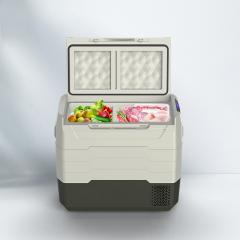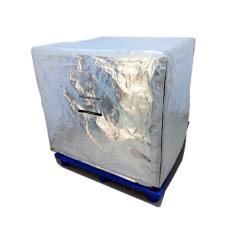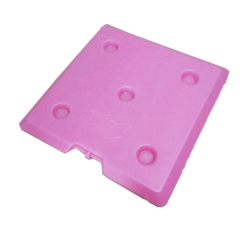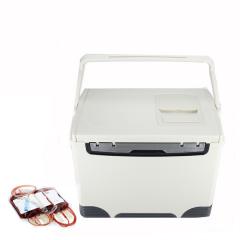Any product labeled as “perishable” or “temperature-sensitive” needs effective cold chain management to control temperatures during transit, processing, storage, and display to the end customer. These products include foods, beverages, and pharmaceuticals like:
* Medicine
* Desserts (ice cream, cakes, chocolate)
* Meat and seafood
* Fresh fruit and vegetables
* Milk and its processed products (yogurt, ice cream, cheese, other fermented products)
* Vaccines (including COVID-19 vaccines) and other medical products
Companies that manufacture, transport, or sell these goods prioritize cold chain logistics to prevent spoilage, maintain quality, and ensure public safety, avoiding financial losses.
Five Elements of Cold Chain Logistics
Cold chain logistics involves tasks to prepare, store, transport, and monitor temperature-sensitive products. Success depends on controlling temperatures at every step to ensure products are in good condition when delivered.
1. Cooling System: Systems that bring products to their required temperature, ensuring they stay at the right temperature during processing, storing, and transporting.
- Tropical fruits (bananas, pineapples) need 12° to 14°C.
- Vegetables, fruits, dairy, and meat should be cooled to 2° to 4°C.
- Meat, bread, cakes, and frozen items require -10° to -20°C.
- Seafood, ice cream, and some frozen foods need -25° to -30°C.
2. Cold Storage: Facilities and equipment like vaccine and medical refrigerators, freezers, refrigerants, insulated containers, and cold rooms to store temperature-sensitive products.
3. Cold Chain Packaging: Systems like gel packs, dry ice, liquid nitrogen, eutectic plates, and quilts to maintain the correct temperature.
4. Cold Transport: Methods to keep products at a stable temperature, including refrigerated trucks, cargo ships, and air cargo. IoT devices track and monitor temperatures in real-time to ensure consistency and compliance.
5. Cold Processing and Distribution: Maintaining the right temperature from receiving products to moving them to storage for end customers. Facilities enable multiple suppliers and distributors to deliver cold products to various destinations to meet B2B or B2C demands.

 English
English  français
français русский
русский italiano
italiano español
español português
português العربية
العربية 日本語
日本語 한국의
한국의 magyar
magyar










